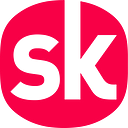Building a Growth Framework

At Songkick, we’ve recently finished developing a Growth Framework for the Technology team — a clear and simple document we all own, that helps answer the question “How do I progress in my career?”. Check it out here.
Why?
If we’re honest, we’ve outgrown our ad-hoc approach to career progression. We wanted to define a process to help make it clear:
- what areas to focus on to get even better at our current jobs
- what future opportunities are available to us, and
- how we grow to get there
Essentially, to remove any of the fuzziness & uncertainty in developing our careers at Songkick, and make things:

How did we build it?
With a lot of work from our awesome team. Here are some key takeaways from our experience going through this.
Stand on the shoulders of (tech) giants
Luckily for us, a bunch of other great companies have a) done this before, and b) shared their process with the tech community. As Spotify rightly point out:
If you are trying to figure out how to approach career paths in your company, it will be tempting to take ours (or someone else’s) and just use that […]. Your culture is unique; a career path framework from another company will not build on or reinforce the values that make your company great.
So instead of finding an off-the-shelf Growth Framework, we started by researching the process other companies followed to build theirs; including GDS, Spotify, Medium, and Rent the Runway. We cherry-picked our favourite ideas from each to help shape our plan of attack.
Tackle it piecemeal
It’s a big jump to go from nothing to a complete Growth Framework. To help us tackle this work, we broke it down into two smaller pieces, which we worked through one after the other.
Step 1: Developer & Individual Contributor steps.
We worked as a group to define the steps for Developers (those who deliver value by building and maintaining software) and Individual Contributors (technical experts who lead by example). We came out of that process with a set of roles, skills, and example behaviours for each.
Step 2: People Management steps.
We then repeated the process for People Managers (those who are leadership experts, responsible for developing the team).
Finally, we smooshed them together to give our complete steps, roles, and responsibilities. Here’s what that looks like at a high-level:

We also held a quick Liked, Lacked, Learned retrospective between Step 1 & 2 to make sure we were #improving.

Build as a team
This is for the team, so it better be built by the team. For defining both the Individual Contributor and People Management steps above, we had 12 different developers from the team work together, with a mixture of interests, seniority, and experience. Each group worked for a couple of hours a fortnight over a few months to create something we were happy with.
The rest of the team then reviewed the draft, suggested improvements, and generally helped get it in a much better place, before we finally settled on v1 of our Growth Framework (🎉).

So what does it look like?
The Growth Framework doc gives an overview of the 9 roles we currently have (plus one level of progression for the current team — in this case, Senior Architect and Engineering Director):

As well as the 7 skills we care about across all roles:

And brings both together to give a clear table of skills & example behaviours, for example for the Software Developer (2) role:

We’re planning to use this at least once a quarter alongside our existing review cycle, as a way of setting career progression plans and OKRs (Objectives & Key Results). But we hope to check-in on this doc and our progression more often, and weekly 1:1s with our manager are a great opportunity to do that.

What comes next?
We’re very aware this is version 1; it will have teething issues, and we’re learning what those are by using it as a team right now. We’ve also made it clear that this is a living document which we all own, so it’ll be up to us to keep this updated and useful for our team.
I’m really excited to see how this grows, changes, and improves alongside our Technology team.
It’s worth pointing out that this was not a quick & easy process — it took a lot of time and effort from the team to get here, and for good reason. If you’re planning to embark on this journey, make sure you’re honest about the investment it’ll take. Don’t worry though, it’ll be worth it!

